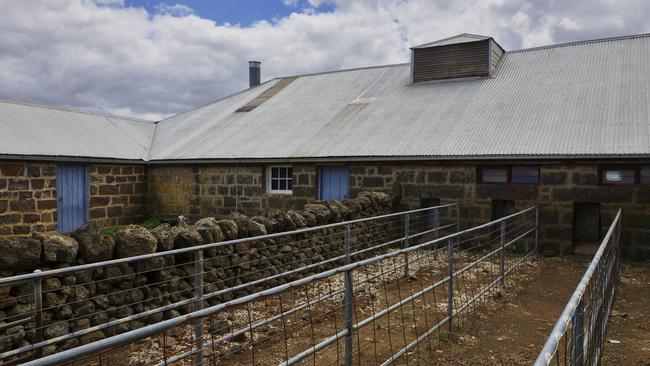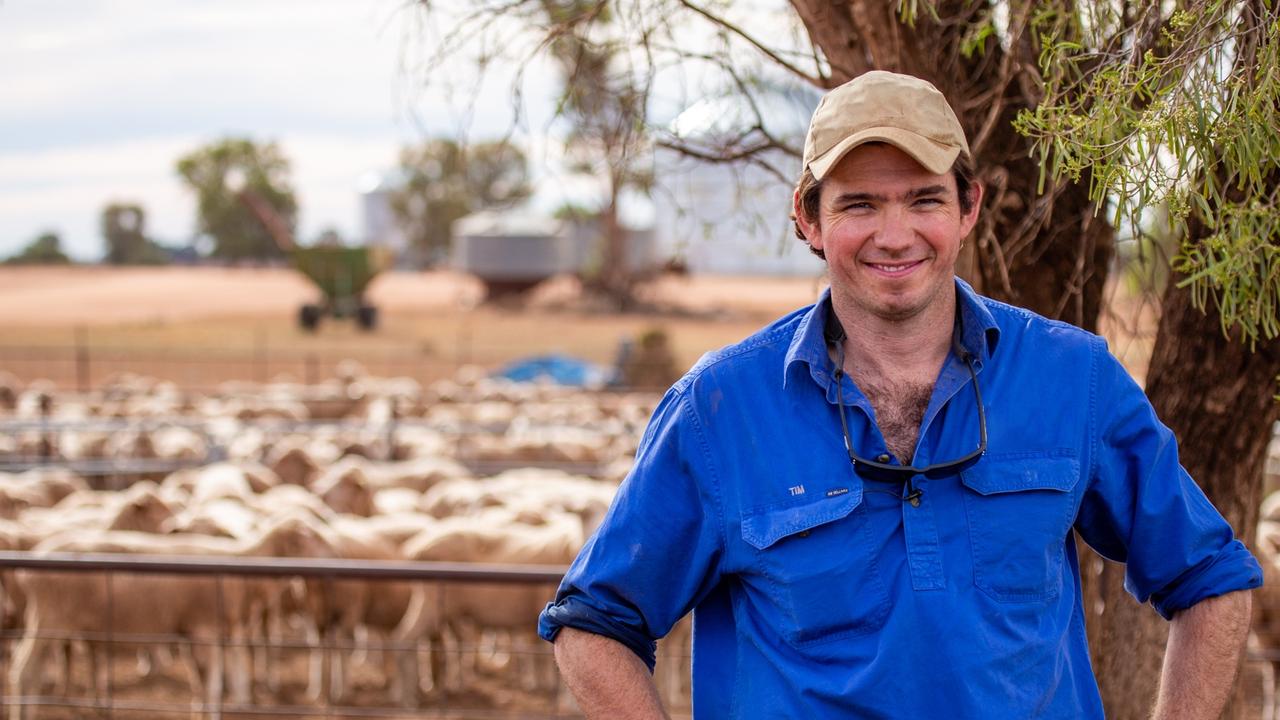The 15 most iconic Aussie shearing sheds: Cooinbil, Yanga, Cordillo Downs
These are the nation’s most legendary woolsheds, known for their historic significance, size and contribution to the wool industry.
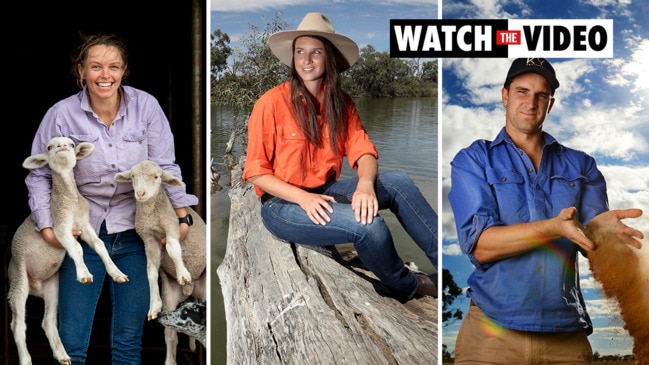
If Australia was built on the sheep’s back, there’s no denying that shearing sheds have been the engine room of the nation’s economy over the past 150 years.
While some of Australia’s most iconic wool sheds have been converted to wedding venues or accommodation in recent years, many of the historic buildings are still in working order.
Below are 15 of the most iconic, chosen for their historic significance, architecture, size, scale and contribution to the wool industry.
Collectively, these sheds have produced millions of tonnes of wool and many still host shearing teams that power through hundreds of thousands of sheep every season.
TOGANMAIN, HAY NSW
Arguably one of the most famous shearing sheds in the country is Toganmain.
The shed is immortalised in Banjo Patterson’s song Flash Jack from Gundagai: “I’ve shorn at Burrabogie, I’ve shorn at Toganmain”. Built in 1875, the last sheep were shorn at Toganmain in the early 2000s and the shed is no longer in use, but a crowd funding campaign and the Toganmain Wool Precinct Inc group is trying to restore it to its former glory.
The TPC notes that it saw more than seven million sheep dragged across its board, including in September 1876 when an Australian record of 202,292 sheep were blade shorn within the month by 92 blade shearers.
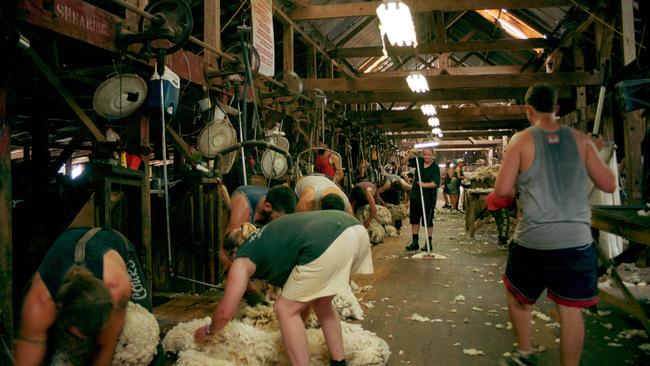
COOINBIL, COLEAMBALLY NSW
One of the biggest working shearing sheds in the nation is found at Cooinbil, currently owned and operated by Paraway Pastoral Company.
The newer portion of the shed was built by the late Don Armstrong and has 22 stands. It adds to a much older section which was the original part of the Coleambally operation.
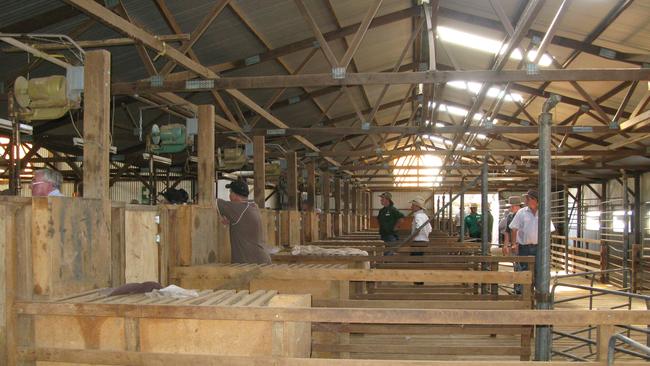
YANGA, BALRANALD, NSW
Another iconic Riverina wool shed is at Yanga, near Balranald, which is found on the Murrumbidgee River not far from the township.
It was built in the late 1800s and was one of the largest in the district with the ability to house 3000 sheep undercover and work for up to 40 shearers.
It is now part of the Yanga National Park and is open to the public.
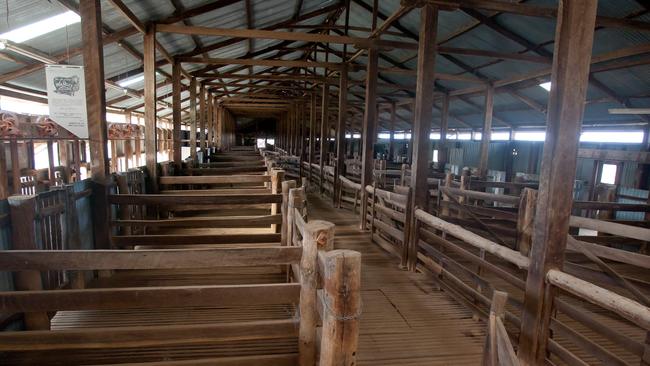
OLD ERROWANBANG WOOLSHED, BATHURST
This central western NSW wool shed is unique for two key reasons. It is the only wool shed in Australia built over four levels and the only shed with an indoor plunge dip.
Owner Jann Harries said the shed was built in 1886 of timber and iron and had the ability to hold 4000 sheep under cover on grating.
The shed had 40 stands for blade shearing and was last used in 2014.
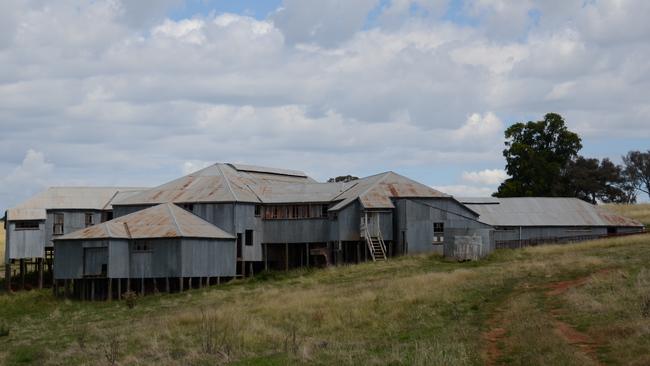
JONDARYAN, TOOWOOMBA, QLD
The original Jondaryan Woolshed built in 1847 was burned down in 1849 by striking shearers.
Another smaller shed was built before the iconic heritage-listed shed was built in 1859-1861, with the first sheep shorn that year.
At its peak, it had 52 shearing stands and could hold 3000 sheep undercover and by 1873, 250,000 sheep were shorn each season.
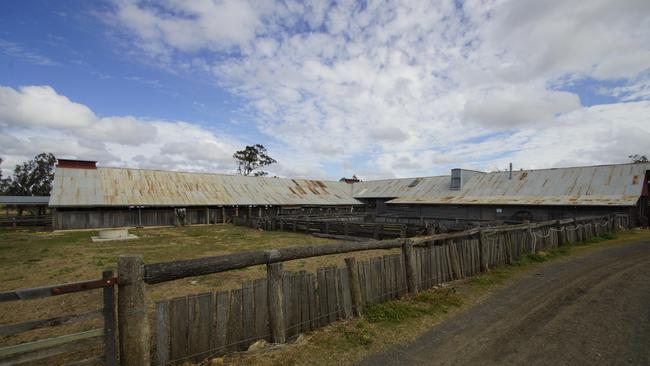
CORDILLO DOWNS, SOUTH OF BIRDSVILLE, QLD
At 245km south east of Birdsville, Cordillo Downs remains one of the best-known sheds in the country despite its lack of use for almost a century.
Its iconic status is due to its construction with stones and a curved roof, with the shed completed in 1883. Stone was used due do the inability to source timber in the remote desert setting.
More recently, heritage stonemasons have been working on it to restore the shed which will continue this year.
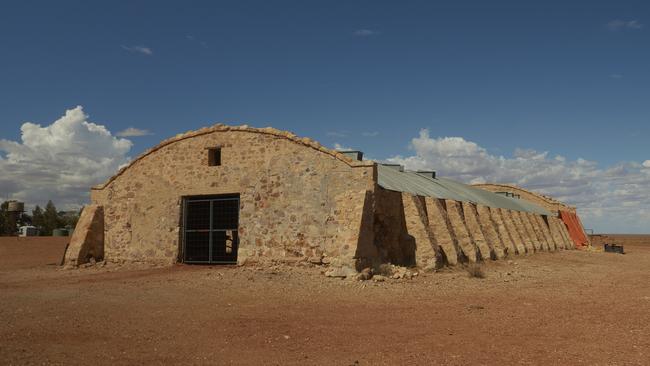
BUNGAREE, CLARE, SA
Established by George Hawker in 1841, Bungaree produced one of the country’s most successful sheep flocks at a time when Australia rode “on the sheep’s back”.
On settling at Bungaree, the first priority of the Hawker brothers was to build a shearing shed and work began on the current building in 1842. As shearing was done in summer in those early years, only the shearing board was roofed with native pine trusses and red stringybark shingles to provide the shearers with shade.
The rest of the building was open to the skies until the mid 1860s, when corrugated iron was imported from England.
Over time, further alterations were made to the shed, including the extension of the wool bale storage area and changes to some of the roof-line to accommodate the drive shaft of the shearing plant for mechanical shears and different wool presses.
A blackstone engine that once powered the shearing plant is still displayed in the shed. By the turn of the century, some 100,000 sheep were shorn in this shed annually, by a team of about 50 shearers over a period of about 6 weeks. In addition, there were staff employed to muster and yard the sheep, pick and sort the wool, press and brand the bales and brand the sheep.
Today Bungaree remains the home of the 4th, 5th and 6th generations of the Hawker family and the centre of a mixed farming enterprise including sheep, cropping and tourism.
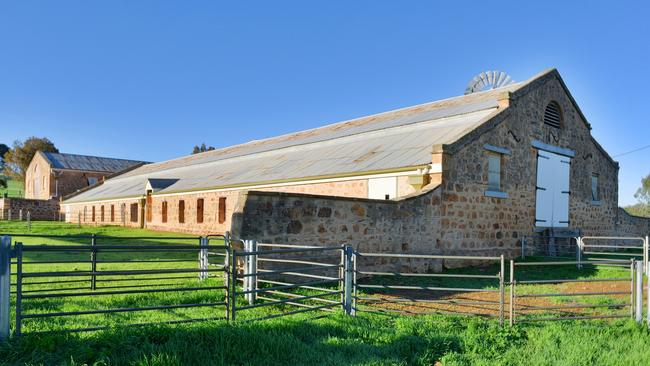
WINDY STATION, QUIRINDI
Windy Woolshed was built in 1901 by the AACo after the need became apparent for a larger woolshed on the 300,000 acre settlement of Warrah Station. Windy was at the western side of the settlement.
Local cypress was milled and used from Windy and after time was sourced from local timber mills. Oregon is also used in the shed as the cross beams in the ceiling.
During the first year of shearing 60,000 sheep were shorn and at any period of time, 4000 sheep could be housed undercover in the shed. The shed has 44 stands. In some places there are posts used from the one single tree which reach from the underpinning all the way to the roof.
The shed is no longer used for shearing and Windy Station no longer run a commercial flock of sheep. Romani Pastoral Company purchased Windy Station in 1997 and are still the owners of Windy and Warrah Stations, which combined are 50,000 acres in total. In 2017 the woolshed was registered on the NSW State Heritage register. It is the wish of the Windy Station owners that the woolshed retains its grandeur and conserved in a way so that visitors have access to its beauty.
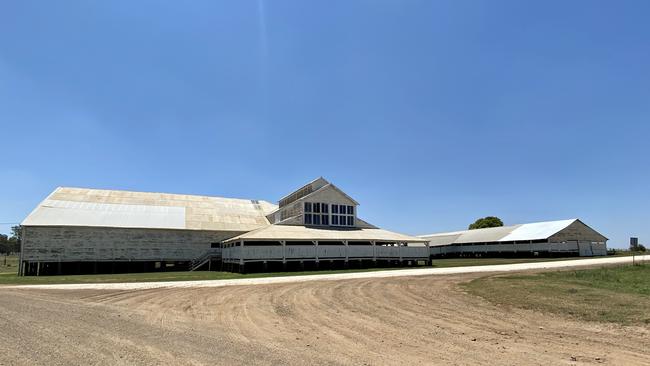
DUNLOP STATION, LOUTH, NSW
The Dunlop Station woolshed’s claim to fame is that it was the first in Australia to convert from blade shearing to machine shearing. The original 45 stand wool shed saw 184,000 sheep shorn in 1888 and was part of a 400,000-hectare station was part of the McCaughey Brothers holdings.
It was last used for shearing in 1993 and is testament to the rich history of wool growing in pastoral areas.
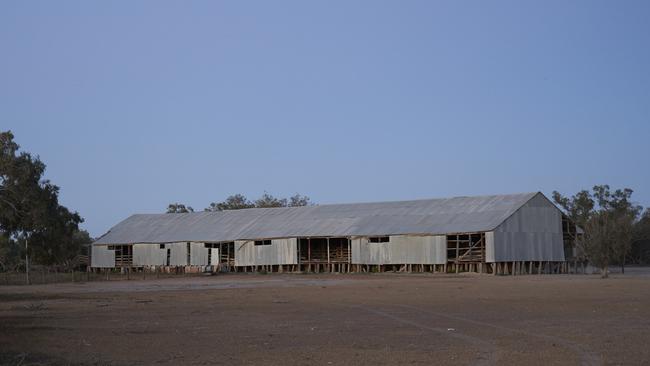
REOLA, WHITE CLIFFS
This western NSW shed is one of the most modern operating sheds in the world and was built with three important goals in mind – it had to be fast, efficient and effective in harvesting wool with the ability to shear 3000 sheep and press 95 bales of wool a day.
The 16-stand shed built in 1990 was built over four floors to allow efficient wool handling.
BARUNAH PLAINS, HESSE
This property is part of Western District folklore and is believed to have been the biggest sheep station in Victoria before soldier settlement in 1946.
At that time, it was running 50,000 Merino sheep across 24,289 hectares and was owned by the Russell family from the 1850s to 1978.
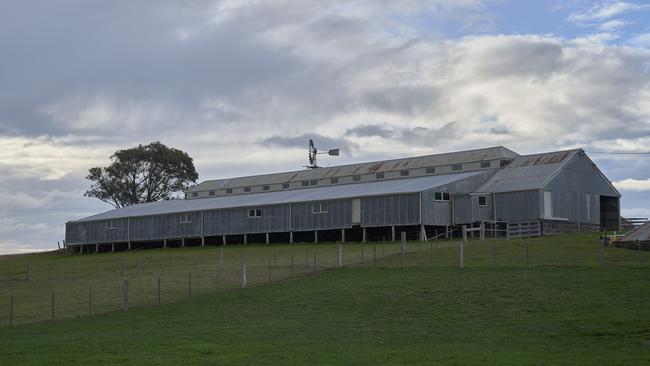
TERRINALLUM, DARLINGTON
This iconic woolshed was built in 1850 by Clyde Company, which owned the property at the time.
At its peak Terrinallum is believed to have run more than 50,000 sheep, all of which would have been shorn in the station’s blue stone wool shed.
It is one the biggest of its kind in Victoria, has 14 stands and can hold 2500 sheep under cover.

EAST LODDON, SERPENTINE
East Loddon Woolshed, built around 1871 by engineer, inventor and pastoralist John E. Ettershank and is rare in that is built from brick. About one million bricks were made on the property and used for the woolshed, nearby buildings and surrounding yards.
The woolshed is also unique as it was designed by an architect, WH Vahland. To that extent, the 28-stand shed features arches, a sawtooth roof and gabled ends.
The shed had the capacity to hold 1000 sheep under cover.
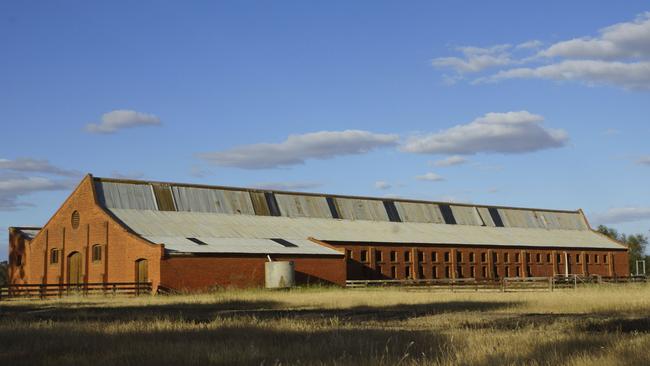
WARROCK STATION, CASTERTON
A wool shed built from materials on site makes this building on Warrock Station unique. The woolshed was built from 1843 until 1860 from timber milled on the property in its own saw pit.
Originally the shed was built for 10 stands of blade shearers but was converted to five stands.
The shearing shed is just one of the efforts of Scottish cabinet maker George Robertson, who built 57 buildings on the station before his death in 1890.
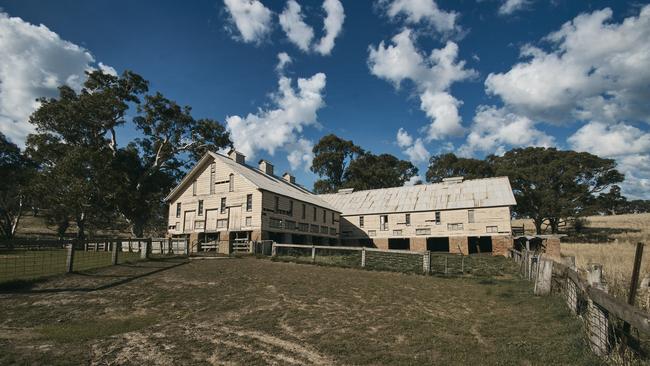
WEST CLOVEN HILLS, CAMPERDOWN
The West Cloven Hills shed was started in the 1850s but when the gold rush started at Ballarat, the stone masons left the shed half built as they rushed to make their fortunes.
The then owner pitched a roof on the incomplete walls resulting in its unique construction.
Originally built for 14 blade shearers, it was converted t overhead gear about 1900 and to electric overhead machines in the 1940s.
It is still used for shearing, but has a three-stand centre raised board, built in 2001. It has been in the Cole family for six generations.
